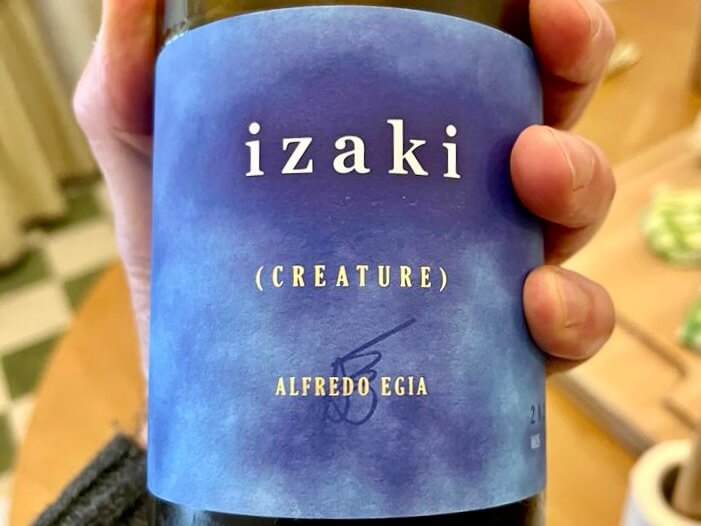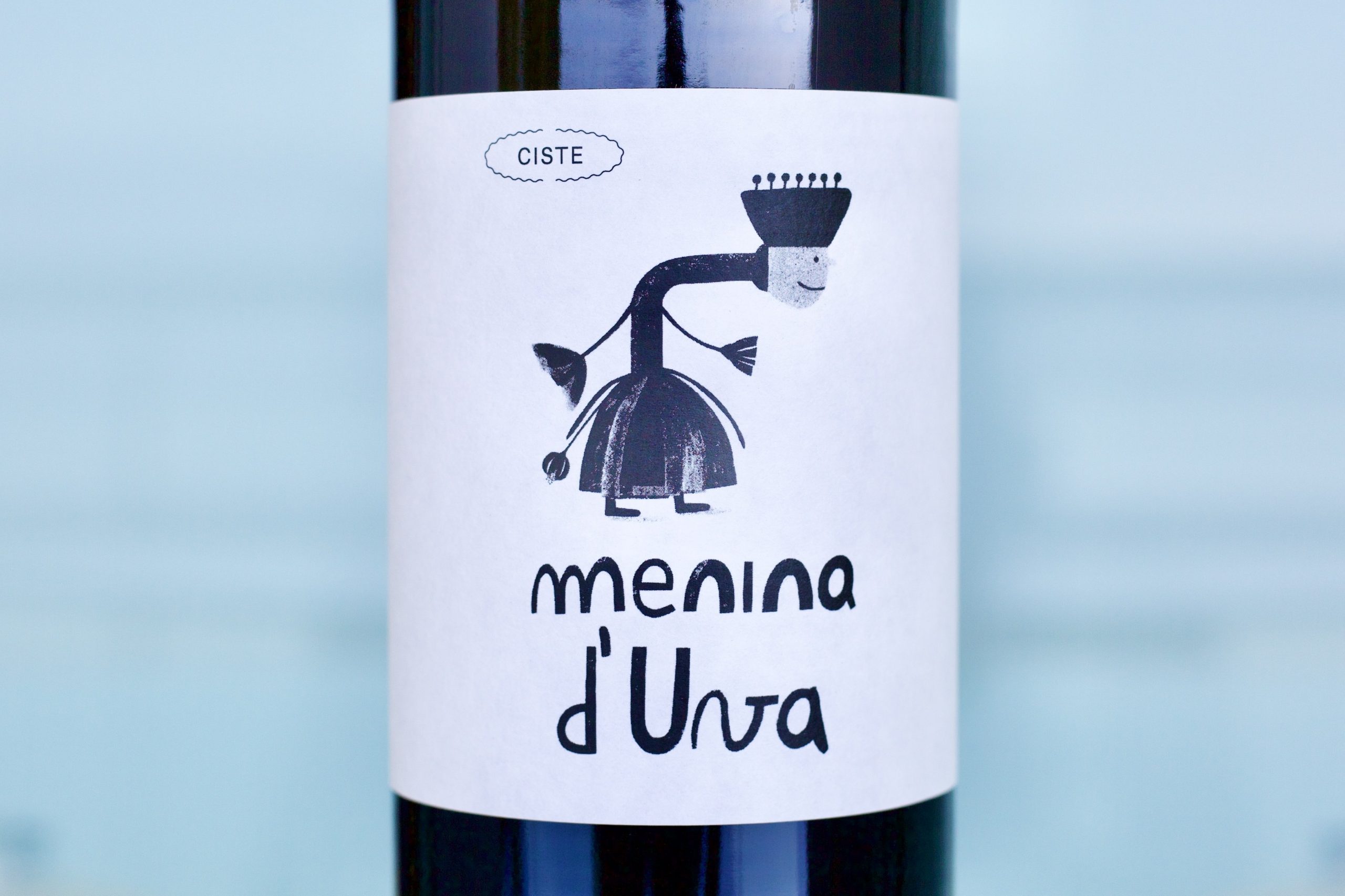
We have a lot of supernaturalists hitting the streets this month. Our first two are from very different corners of Iberia, Alfredo Egia from Spain’s green and wet Txakoli and Menina d’Uva from Portugal’s high altitude, arid moorland, Trás-os-Montes. Mid-month we’ll feature the second round with two of our newest and most exciting growers, one from the Loire Valley and another from Rías Baixas. First, let’s dig into Egia and Menina.



What happens when biodynamics-practitioner and no-sulfite winegrower Alfredo Egia adds a dash of sulfites to one Txakoli wine? Fifteen tiny little milligrams per liter of added sulfites? IZAKI! I didn’t expect Alfredo’s 2021 Izaki to be as fabulous as Rebel Rebel and Hegan Egin because it’s the third wine in the range and about half the price of the latter. Alfredo sent me two bottles that sat in my cellar for six weeks before I pulled the first cork, at which time I sent a barrage of enthusiastic text messages minutes after opening. His response: “And they’re only tank samples.” IZAKI!

Izaki means “Creature,” in Basque, and is a blend of 80% Petit Courbu and 20% Gros Courbu from Alfredo’s biodynamic vineyard and a parcel in conversion just next to it. (Rebel Rebel and Hegan Egan have been biodynamic since the beginning.) The biodynamic grapes (35%) are vinified and raised in two old, 400-liter barrels, while the plot in conversion is in stainless steel. The tank sample followed up by the finished version were stunners. While we received a bit more than Rebel Rebel, it likely won’t be enough to satisfy the demand for this micro-producer.

The 2020 Rebel Rebel is a great follow up to the more tense 2019. 2020 was a hotter year and the wine is a little more fruit forward and gentle than the savory, citrusy, power-punching, shredder, 2019. The longboard soul-surfer between the two, the 2020 Rebel Rebel may take a minute to get out of first gear, but when it does it’s a steady and uninterrupted climb—a perfectly clean and pure SO2-free white wine. A blend of 80% Hondarrabi Zerratia and 20% Izkiriota Txikia, the grapes are similarly processed as Izaki, with whole-cluster pressing and the malolactic fermentation that usually overlaps with the end of the alcoholic fermentation and finishes by the end of spring. The wines remain on their lees without bâtonnage (lees stirring), and some barrels are topped off while others are intentionally left untopped so they can oxidize a little, adding to the layers of complexity and softening the fruit’s dominance. Before the following harvest, the wine is blended into steel where it rests for another six to ten months prior to bottling. Rebel Rebel is neither filtered nor fined.


A visit to Trás-os-Montes, with Riccardo and Frederico at Arribas Wine Company and Aline at Menina d’Uva, was long overdue. Even though I live in northern Portugal, it takes three and a half hours to drive directly east for the 180 miles in between. With Gino Della Porto, from Nizza Monferrato’s newest cutting-edge project, Sette, in tow, we passed through Vinho Verde’s densely green subzones during a wet, early spring. Then we moved on to Douro’s expansive and often breathtaking river valleys of the Baixo Corgo and Cima Corgo subzones, and continued through the gentler countryside of Douro Superior for a quick overnighter with Mateus Nicolau de Almeida and his wife and winegrowing partner at Trans-Douro-Express, Teresa Ameztoy. We finally arrived early the following morning to one of the most isolated areas of mainland Portugal, the serine and enchanting Trás-os-Montes—a Portuguese land seemingly frozen in time.
Riccardo and Frederico continue to impress with their already spectacular and budget-friendly Saroto wines. The range remains familiar and in line with the previous years, but their last half decade of tinkering helped clarify their direction in the cellar and resulted in yet another new level with the incoming 2022s, which will arrive in the fall. More on that in a few months.
We arrived in the afternoon to the microscopic village, Uva, for our visit with the warm and softly charming Aline Dominguez, who was sporting a little belly bump. The baby is expected during harvest time this year; she and her partner, Emanuele, from Abruzzo Italy, have joined forces in life as well as in wine.
Normally Aline’s wines would have arrived last year, but due to global freight delays she had difficulty securing glass. Forced by the short supply of Burgundy-shaped bottles, she bought some with Bordeaux’s more linear posture to finish the job. Perhaps with too much time on their hands as the remodel of their cellar was delayed due to the extreme inflation of material costs, she and Emanuele changed the labels from elegant black and white to, as you can see by the label images, a more playful set, and both fit perfectly with Aline’s lighthearted and quietly deep wines.

When we tasted them this April, Menina d’Uva’s Gamay-nosed, tense, and spritely 2022 Ciste, fired with citrus, rhubarb, watermelon, coriander, resinous high desert plants (Ciste) and leather. It’s especially fresh and bright this year, even if it’s sporting 12.5% alcohol. The mixture remains relatively the same as in the past, with 70% red grapes, Bastardo Preta (Trousseau in France) and Negreda (Mouratón in Spanish), and 30% white, with Malvasia, Bastardo Branco, Formosa, and some others in minuscule quantities. The grapes are completely whole bunch and co-fermented for a few days and aged exclusively in stainless steel. The short time on skins is intended to achieve good fruit and floral extraction without digging too far before carbonic characteristics overwhelm the wine; she wants to keep this wine truer to the expression of the place and less to a fermentation technique that pushes up too much fruit and fermentative aromas to the forefront.

The 2022 Palomba follows suit with all its previous vintages with its lightly reductive nose upon opening, but this year it quickly moves past it, opening wide and leading with more fruit than it did before. When at the cellar in early March, I was convinced this was her best Palomba yet. It has sweet plum, Persian mulberry, a tense palate (less than Ciste, but clearly a mark of the vintage), Trás-os-Montes countryside high desert plant and flower aromas, and a harmonious range of blue to dark red fruits and a finish of lifted and taut red currant. Palomba is made of 90% Negreda, also known as Mouratón in Spain. This leader in the blend is known to produce big, juicy, dark-colored wines with surprisingly little in the way of tannin. It’s mixed with other reds that few outside of Portugal have heard of, like Uva de Rei, Moscatel Preta, Moscatel Roxo, among others. It comes from five different plots located in the villages of Uva, Mora and Vale de Algoso, and is grown on a mixture of schist and quartz scattered about on the surface of the vineyards. The pressure points within Aline’s wines are deep and fully mouth filling while remaining ethereal and tense. The follow-up bottle I tasted in April at home confirmed that it may be (at least for this taster) her top effort.

